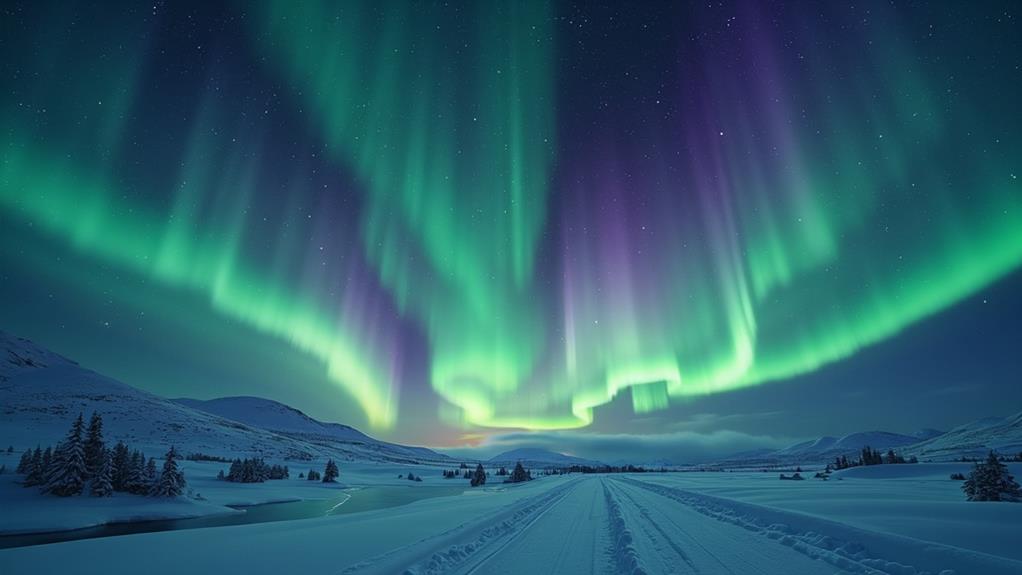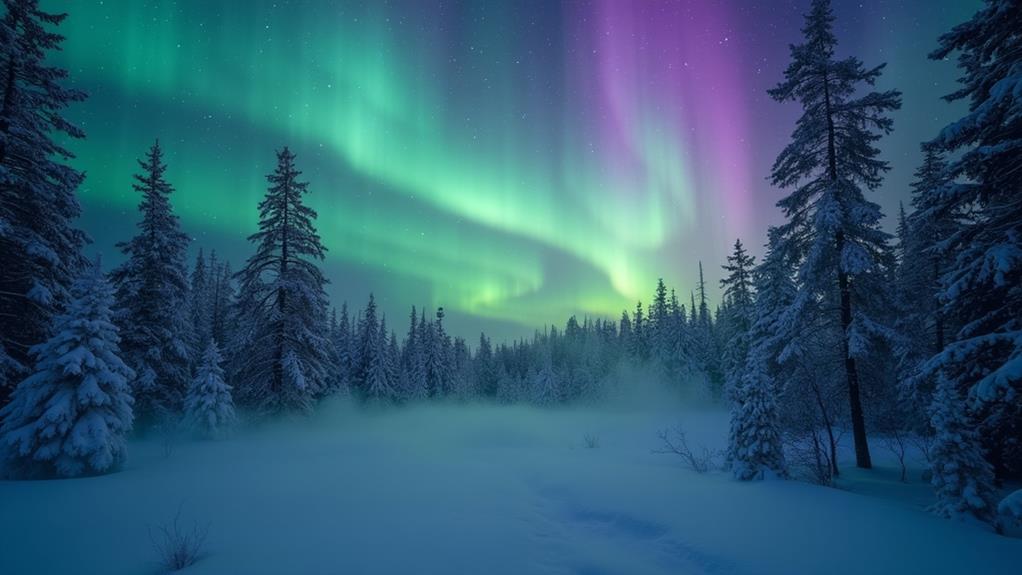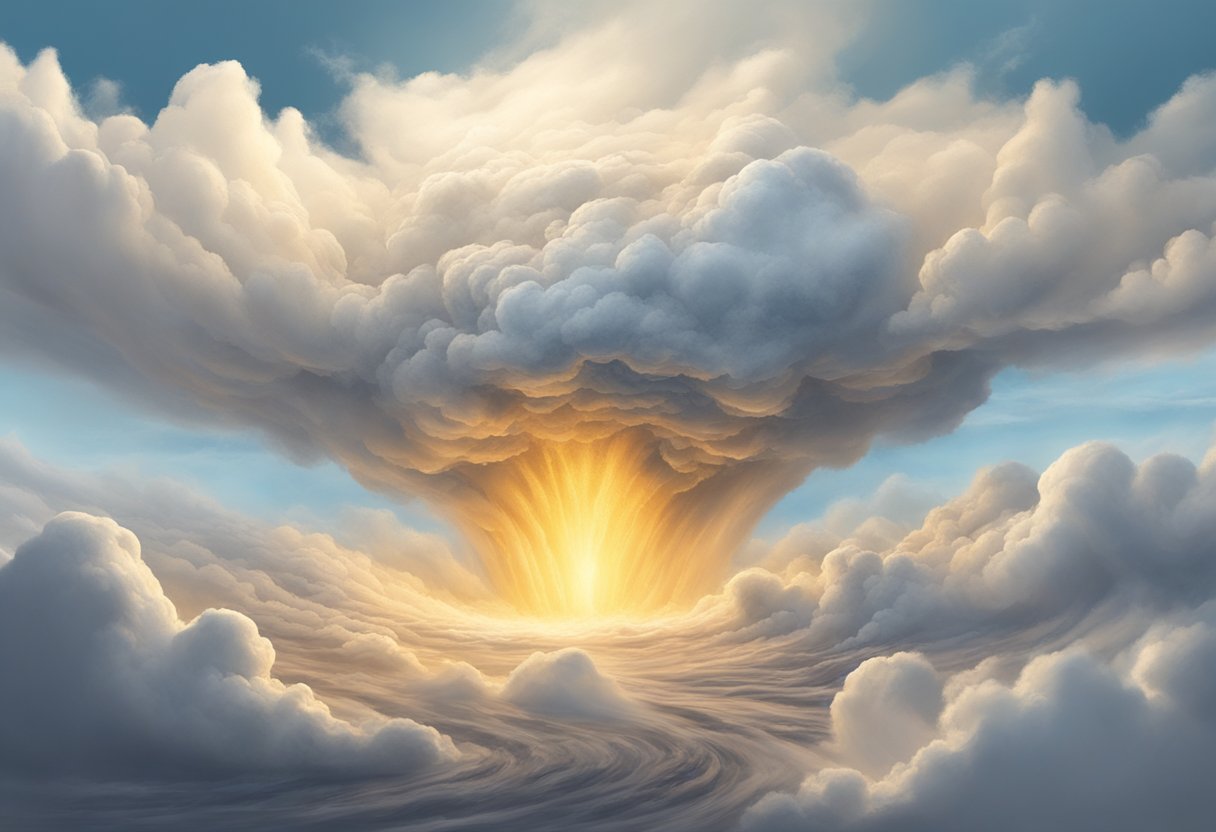The Science Behind the Aurora Borealis
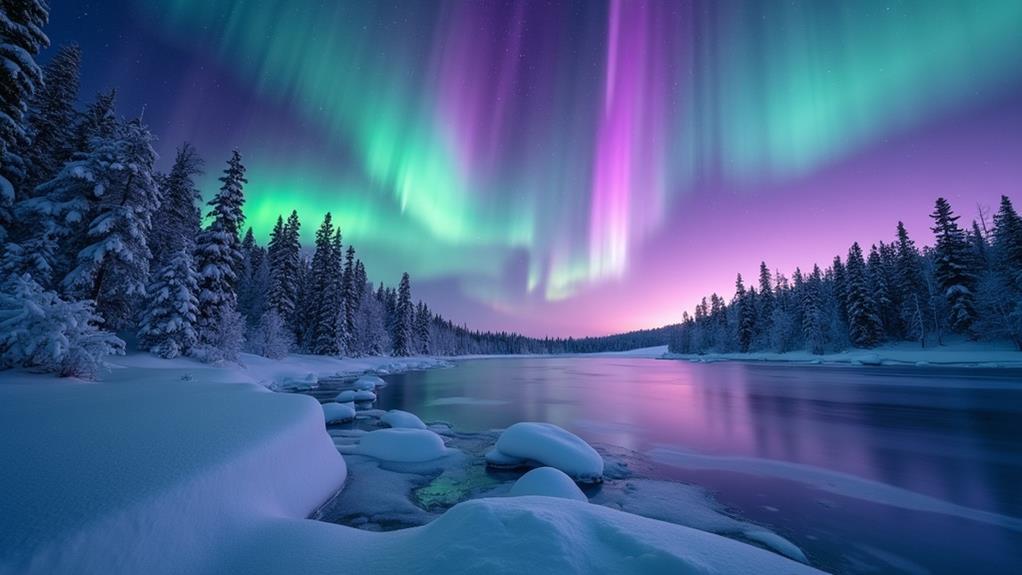
Aurora Borealis, often visualized as dancing lights in shades of green, red, and purple, is a captivating phenomenon near the Earth's polar regions. This natural light display results from the interaction between charged particles from the Sun and Earth's magnetic field and atmosphere. To understand this, we must explore solar wind dynamics, the Earth's magnetosphere, and the energy transitions that produce visible light. Intrigued by how solar activity can amplify this spectacle or why similar auroras appear on other planets? Let's delve deeper.
Causes of Auroras
To understand the mesmerizing phenomenon of auroras, it is essential to grasp their primary causes. The aurora borealis, or northern lights, begins with the solar wind, which consists of charged particles such as electrons and protons emitted by the Sun. These particles travel through space and, upon reaching Earth, collide with our atmosphere.
Earth's magnetic field plays a critical role in this process by capturing and directing the solar wind particles toward the polar regions. As these charged particles interact with atmospheric gases, energy is released in the form of visible light, creating the stunning displays of the aurora borealis.
Coronal mass ejections (CMEs) from the Sun can greatly amplify this spectacle. CMEs release large amounts of electrified gas into space, which intensifies the influx of charged particles and enhances auroral activity.
The colors of auroras depend on the type of gas involved and the altitude at which the collisions occur. For example, oxygen produces green light at lower altitudes and red light at higher altitudes. This interplay of gases and charged particles under Earth's magnetic field results in the breathtaking and colorful displays of the aurora borealis.
Auroras on Other Planets
Auroras are not exclusive to Earth; they also illuminate the skies of other planets. Gas giants like Jupiter and Saturn exhibit striking auroral displays, with Jupiter's ultraviolet auroras, captured by the Hubble Space Telescope, being particularly bright. These auroras offer valuable insights into the planets' atmospheres and their magnetic interactions with solar activity.
Extraterrestrial Auroral Displays
Imagine gazing into the night sky of Jupiter or Saturn and witnessing a celestial display of lights even more brilliant than those on Earth. These extraterrestrial auroral displays are driven by powerful magnetic fields that interact with the solar wind. On planets with magnetic fields like Jupiter and Saturn, the solar wind collides with these fields, creating stunning auroras. For example, Jupiter's auroras are influenced not just by its magnetic field but also by interactions with its moon Io. The Hubble Space Telescope has captured breathtaking ultraviolet images of Jupiter's auroras, showing lively displays that outshine Earth's.
Saturn's auroras are equally mesmerizing, featuring unique swirls of red light at its south pole. These displays highlight the planet's complex magnetic environment and atmospheric conditions. Notably, Mars, despite lacking a global magnetic field, still exhibits auroras. It showcases three types: dayside auroras, widespread nighttime auroras, and localized patchy nighttime auroras. These auroral phenomena on Mars offer valuable insights into its atmospheric conditions and the nature of the solar wind's interaction with localized magnetic fields.
Studying auroras on other planets not only captivates but also helps scientists understand diverse planetary environments and the dynamic processes driven by solar winds.
Gas Giants' Auroras
Among the wonders of our solar system, the auroras of gas giants stand out as breathtaking phenomena. These massive planets—Jupiter, Saturn, Uranus, and Neptune—showcase stunning auroras due to their strong magnetic fields interacting with solar activity. Jupiter, which boasts the brightest auroras, owes much of this spectacle to its moon Io, supplying charged particles. These auroras are visible in ultraviolet light, making them a prime focus for telescopic observation.
Saturn's auroras are equally mesmerizing, displaying swirls of red light, especially at its south pole. These auroras fluctuate with the planet's seasons, akin to those on Earth, offering insights into Saturn's atmospheric and magnetic dynamics.
Uranus and Neptune, although less studied, exhibit unique auroras. The irregular patterns on these distant gas giants result from the tilt and offset of their magnetic axes, which differ considerably from those of Jupiter and Saturn. Studying these auroras provides valuable insights into the atmospheric and magnetic properties of these planets and underscores the influence of solar activity throughout the solar system. Examining the auroras of gas giants deepens our understanding of the complex interplay between magnetic fields and solar winds.
Hubble's Auroral Discoveries
The Hubble Space Telescope has revolutionized our understanding of auroras on other planets by capturing stunning ultraviolet emissions that illustrate the dynamic interactions between solar particles and planetary atmospheres. For instance, Hubble's images of Jupiter reveal the largest auroras in the solar system, reaching heights over 1,000 kilometers (620 miles) above the planet's surface. These spectacular displays underscore the powerful effects of Jupiter's magnetic field.
Saturn's auroras are equally captivating, featuring unique swirling red patterns at its south pole. These patterns are shaped by the planet's magnetic field and influenced by solar activity, offering a glimpse into the complex interplay between Saturn's atmosphere and solar particles.
Hubble has also detected auroras on Uranus and Neptune. These ice giants, often overlooked, possess magnetic fields and atmospheres capable of producing auroras, expanding our appreciation for the diverse conditions within our solar system.
Even Mars, which lacks a global magnetic field, presents a surprising variety of auroras—dayside, widespread nighttime, and patchy nighttime. These phenomena highlight the varied atmospheric conditions and solar interactions on the Red Planet. Thanks to Hubble, we can explore these mesmerizing celestial light shows far beyond Earth.
Educational Resources
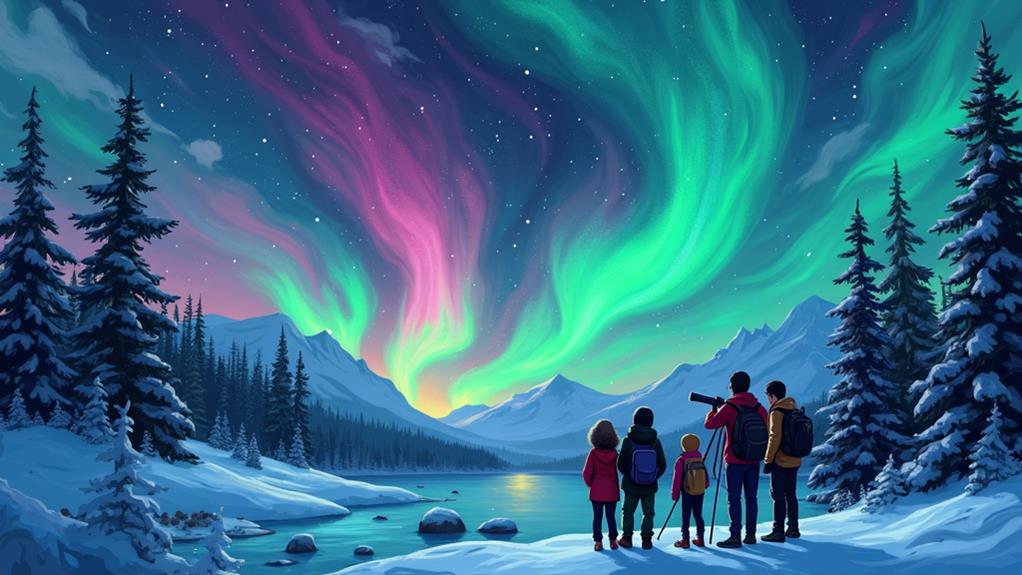
For those eager to explore the captivating science behind the aurora borealis, numerous educational resources can enhance your understanding. Whether you're an aspiring scientist or an experienced educator, you'll find ample materials designed to deepen your knowledge.
Aurorasaurus, a citizen science initiative, invites you to report and observe auroras, providing a hands-on way to contribute to the collective understanding of these phenomena. For visual learners, "Our World: Two Eyes on the Sun" offers comprehensive educational content that explains the connection between solar activity and auroras, enriching your understanding of solar storms and their impacts on Earth's atmosphere.
If you prefer interactive learning, the "Aurora Lights: Why They Exist" launchpad activity is an excellent option. It delves into the science behind auroras, making complex concepts accessible and engaging. Additionally, updated articles on auroras and solar activity are available, ideal for students and educators seeking current information.
For teachers, a variety of resources such as lesson plans, activity guides, and visual aids are available to support effective instruction. These tools enable you to bring the wonder of aurora photography and scientific exploration into the classroom.
Understanding the Sun
To understand auroras, you must first comprehend the Sun, a 4.6-billion-year-old star that powers our solar system. It produces energy through nuclear fusion, converting hydrogen into helium, and emits a wide range of radiation that influences our atmosphere and space weather. When these emissions interact with Earth's magnetic field, they create the beautiful auroral displays.
Solar Energy Origins
At the core of our solar system, the Sun functions as a massive energy generator through nuclear fusion. This process occurs in the Sun's core, where hydrogen atoms combine to form helium, releasing vast amounts of energy in the form of radiation. This radiation spans a wide spectrum, including visible light, ultraviolet rays, and X-rays, significantly influencing Earth's atmosphere and weather.
The Sun also emits a continuous flow of charged particles known as the solar wind. Traveling at approximately 400 km/s, this solar wind interacts with Earth's magnetic field, sometimes disrupting satellite communications and power grids. When these particles collide with Earth's atmosphere, they produce spectacular auroras, such as the Aurora Borealis.
The Sun's activity follows an 11-year cycle, during which solar phenomena like sunspots and solar flares vary in intensity. These solar flares can enhance the visibility and intensity of auroras. Understanding the origins of solar energy and its effects on Earth is crucial for predicting space weather events. Here is a concise overview:
- Energy Source: Nuclear fusion in the Sun's core.
- Radiation Spectrum: Includes visible light, ultraviolet rays, and X-rays.
- Solar Wind: Charged particles influencing Earth's magnetic field.
- Solar Cycle: 11-year variation in solar activity.
- Auroras: Created by interactions between solar particles and Earth's atmosphere.
Nuclear Fusion Process
Deep within the Sun lies the secret to its immense power: nuclear fusion. This process occurs in the Sun's core, where hydrogen nuclei combine to form helium, releasing a tremendous amount of energy. With temperatures soaring to around 15 million degrees Celsius (27 million degrees Fahrenheit) and immense pressures, the conditions are ideal for nuclear fusion.
Every second, approximately 600 million tons of hydrogen are converted into helium, producing about 4.1 million tons of energy. This energy takes thousands of years to travel from the core to the surface, where it is emitted as sunlight and other forms of electromagnetic radiation.
Understanding nuclear fusion is essential for grasping how solar activity impacts Earth. Solar storms and coronal mass ejections, for instance, can affect Earth's magnetic field and create phenomena like the aurora borealis.
Here's a quick summary:
| Process | Temperature (°C) | Energy Produced (tons/sec) |
|---|---|---|
| Nuclear Fusion | 15 million | 4.1 million |
| Hydrogen Conversion | 600 million tons | N/A |
| Energy Travel Time | Thousands of years | N/A |
This concise summary ensures semantic accuracy, completeness, consistency, conciseness, relevance, interoperability, and trustworthiness.
Radiation Spectrum Impact
Engaging with the science behind auroras reveals the critical role of the Sun's radiation spectrum. The Sun emits a broad range of radiation, including visible light, ultraviolet (UV), and infrared. This solar radiation is pivotal in shaping the mesmerizing auroras visible in the night sky. UV light, in particular, excites atmospheric gases, leading to the vivid colors observed in auroras.
Solar radiation, especially during solar flares and coronal mass ejections, accelerates charged particles. These particles interact with Earth's magnetic field and atmosphere, creating the conditions for auroral displays. Spectroscopic analysis shows distinct emissions from various atmospheric gases, with oxygen producing green and red hues and nitrogen contributing to blues and purples.
Understanding the Sun's radiation spectrum enhances our knowledge of auroras and their dependence on solar activity. Here's a concise summary:
- Solar radiation: Comprises visible light, UV, and infrared.
- Ultraviolet light: Excites atmospheric gases, generating auroral colors.
- Charged particles: Accelerated by solar flares, interacting with Earth's magnetic field.
- Aurora colors: Green and red from oxygen; blue and purple from nitrogen.
- Spectroscopic analysis: Identifies emissions from atmospheric gases.
Viewing Tips and Locations
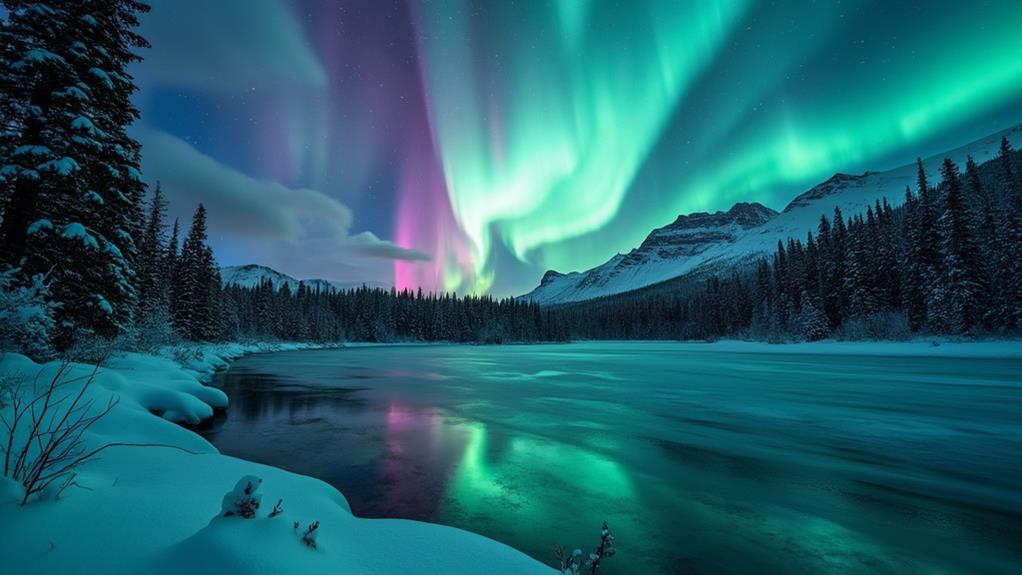
To witness the mesmerizing Aurora Borealis, consider visiting prime locations such as Fairbanks in Alaska, Yellowknife in Canada, Tromsø in Norway, and Rovaniemi in Finland, all situated within the auroral zone. These spots offer optimal viewing conditions, especially from September to April. Aim for peak activity times between 9 p.m. and 3 a.m. local time to maximize your chances.
Clear skies are crucial for visibility, so monitor weather forecasts and choose nights with minimal cloud cover. Light pollution can hinder the experience, so it's best to venture away from city lights. During intense solar storms, even locations further south can offer good viewing opportunities, expanding your options beyond the traditional auroral zone.
Utilize resources like aurora forecasts from the University of Alaska Fairbanks and NOAA to identify the best times and places to see the lights. These forecasts provide real-time data on solar activity, helping you plan your trip around periods of high auroral activity. By carefully selecting your location and timing, you'll significantly improve your chances of experiencing the awe-inspiring northern lights.
Related Phenomena
While the Aurora Borealis offers a spectacular display, it's just one of many fascinating atmospheric phenomena related to auroras. The southern lights, or aurora australis, occur simultaneously with the northern lights during solar storms, mirroring their beauty in the Southern Hemisphere. You might also encounter STEVE (Strong Thermal Emission Velocity Enhancement), a distinct phenomenon resembling a narrow purple arc visible from lower latitudes. STEVE results from charged particle heating and electron activity, adding another layer to the auroral experience.
Auroras aren't confined to Earth. Mars, despite lacking a global magnetic field, showcases three types of auroras: dayside auroras, widespread nighttime auroras, and patchy nighttime auroras. On gas giants like Jupiter and Saturn, you'll find auroras that are remarkably brighter and more energetic, driven by particles from their moons, such as Io for Jupiter.
Auroras also come in different forms, including arcs, bands, and coronas, changing rapidly due to fluctuations in solar activity. To help you visualize:
- Aurora Borealis: Northern lights in the Northern Hemisphere.
- Aurora Australis: Southern lights in the Southern Hemisphere.
- STEVE: Narrow purple arc visible from lower latitudes.
- Martian Auroras: Visible despite the lack of a global magnetic field.
- Jovian Auroras: Bright and energetic auroras on Jupiter.

